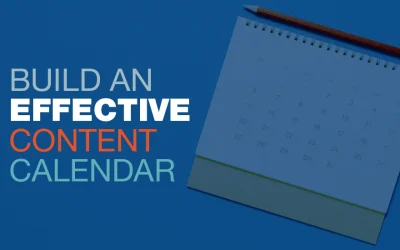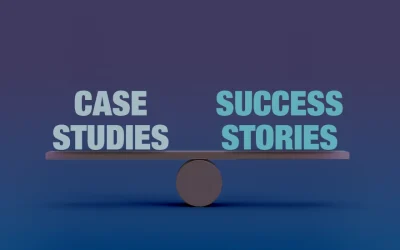Do you remember writing essays when you were in school? If you were like me, you tried to avoid doing an outline until you were eventually forced to as part of a larger research paper.
Outlining can feel like a pain at times, but it serves a very important purpose. It helps you lay out your thoughts and figure out the direction of your paper before you start writing.
By writing down your thoughts, you can see where you want to take the reader, where you are missing important information, and what needs to be clarified.
Outlines save time and help you write faster by putting in some initial work upfront. It also helps make your writing more coherent and flow from topic to topic.
Outlines are foundational and serve as a roadmap for an individual piece of content. In school, that is often sufficient since papers are assigned, are designed to stand alone, and are for an audience of one (the teacher or professor).
In marketing, outlines and content briefs are still essential for individual campaigns. But you need a comprehensive roadmap for all your content so that it works together and has the right messaging. That’s where a messaging framework comes in.
What is a Messaging Framework?
A messaging framework is a meticulously crafted and documented messaging strategy that encapsulates your brand’s distinct strengths, its value, and the target audience.
It serves as a blueprint for conveying what your company represents, guiding the core messaging and tone of voice you should use. A messaging framework also offers a systematic approach to set your brand apart from competitors, often comprising a collection of resources and materials to effectively convey your brand voice and brand personality across different channels to engage your intended audience.
Simply speaking, a messaging framework is a document that serves as a guide for all future content to ensure the messaging is consistent, that it sets you apart from competitors, shows the value your B2B tech company offers, and is tailored to your audience.
Why is a Messaging Framework Important?
Just as an outline helps guide and organize the writing process, a messaging framework helps keep your overall content marketing message focused and on track. There are three main reasons a messaging framework is important for B2B tech and other B2B businesses.
1. Consistency
Having a consistent brand messaging strategy is extremely important. Building a brand image and showing value takes time, but you need to have a strong and consistent message for your audience. A messaging framework makes your communications consistent and keeps everyone in marketing and connected departments on the same page. It serves as a guide for all future blog posts, success stories, web pages, social posts, emails, and more.
2. Scalability
A framework document might seem like overkill if you work alone or with a very small team. But as you grow, a messaging framework allows you to scale more easily. By defining and clearly stating who your audience is, what they care about, and how your services and products solve these problems, you can easily share this important information with new team members. This helps keep writers and subject matter experts (SMEs) on the same page, whether they are internal team members, freelancers, or agency partners.
3. Removes Guesswork
A messaging framework serves as a guide so you don’t have to rely on memory every time you work on a new piece of content. Not everyone writes marketing content every day. If you work with freelancers or an agency, a messaging framework helps keep everyone on the right track and streamlines content production that furthers your brand message.
How to Create a Brand Messaging Framework
A messaging framework is important for B2B businesses. It’s one of the first things we work on with new clients. Everyone has a perception of what your brand is and not everyone internally may be on the same page. Creating a messaging framework helps align your team and ensure you reach the right people with your marketing.
Creating a messaging framework is simple in theory but more challenging in practice. There are a few main things you need to include. The final result may be a few paragraphs, which is why it seems so simple on the surface. Don’t be fooled. These few paragraphs take a lot of mental effort to develop, making this a deceptively more challenging document to create.
Here are the steps you need to take to create your messaging framework.
1. Identify and Define Your Target Audience
Before crafting a messaging framework, you need to know the target audience. The first step in creating a messaging framework is to have a good understanding of who you are trying to reach. Ideally, you already know about your target customers. If not, check out our guide on identifying and creating buyer personas.
At the top of your messaging framework, include the following information about your target audience:
- Company Industry
- Job Titles of the people you want to reach
- Key Demographics
- Goals
- Challenges
- Values
- Communication Style & Preferences
If you already have this info elsewhere, just copy and paste it in. If not, take some time to find this information.
2. Discover Your Value Proposition & Unique Selling Points
Now that you know your audience, your messaging framework needs to summarize why that audience should care. So the next thing to include is your company’s value proposition and unique selling points.
This definition from Help Scout is perfect: “A value proposition is a simple statement that summarizes why a customer would choose your product or service. It communicates the clearest benefit that customers receive by giving you their business.” This is exactly what you need – a clear and concise sentence or two explaining why customers should do business with you.
In addition to that, add your unique selling points. These are the things that differentiate your services and products from competitors.
Again, these things seem simple but can take time to get right. Start by talking with your leadership team. Get everyone together for a meeting and flesh out what makes your company unique.
You may need more than one meeting to get everyone on the same page, but this is time well spent. Everyone should contribute and at the end of the meeting, everyone should agree with the value prop and unique selling points.
3. Define Your Key Messages
With your audience and value proposition defined, it is time to work on your key messages. These are 2-3 simple brand positioning statements that will be present in all your marketing materials. These statements should resonate with your intended audience, show the value of what you do, and prompt people to take action.
Again, 2-3 statements might sound easy to write, but this can be more challenging than it sounds. It’s best to work with your team on this to make sure everyone is in alignment. More importantly, ensure the messages are effective and resonate with your prospects. We recommend analyzing your existing clients to see what about your company, products, and services drew them in and turned them into happy clients.
Putting it All Together
Your final messaging framework can be in any format you would like. However, it should be one document and be saved where it is easy for your team to access. Once your messaging framework is complete, review it quarterly and measure whether your messaging is working. If you aren’t seeing many conversions from your website and content strategy, it might be that your message is off or that the value isn’t clear enough for the people you want to reach.
If you need help crafting a messaging framework and brand message that gets results, reach out to our team of experts. We have been helping businesses build brands that rival big competitors and help them stand out. We’d love to partner with you to help hone your message and achieve your desired results.





0 Comments